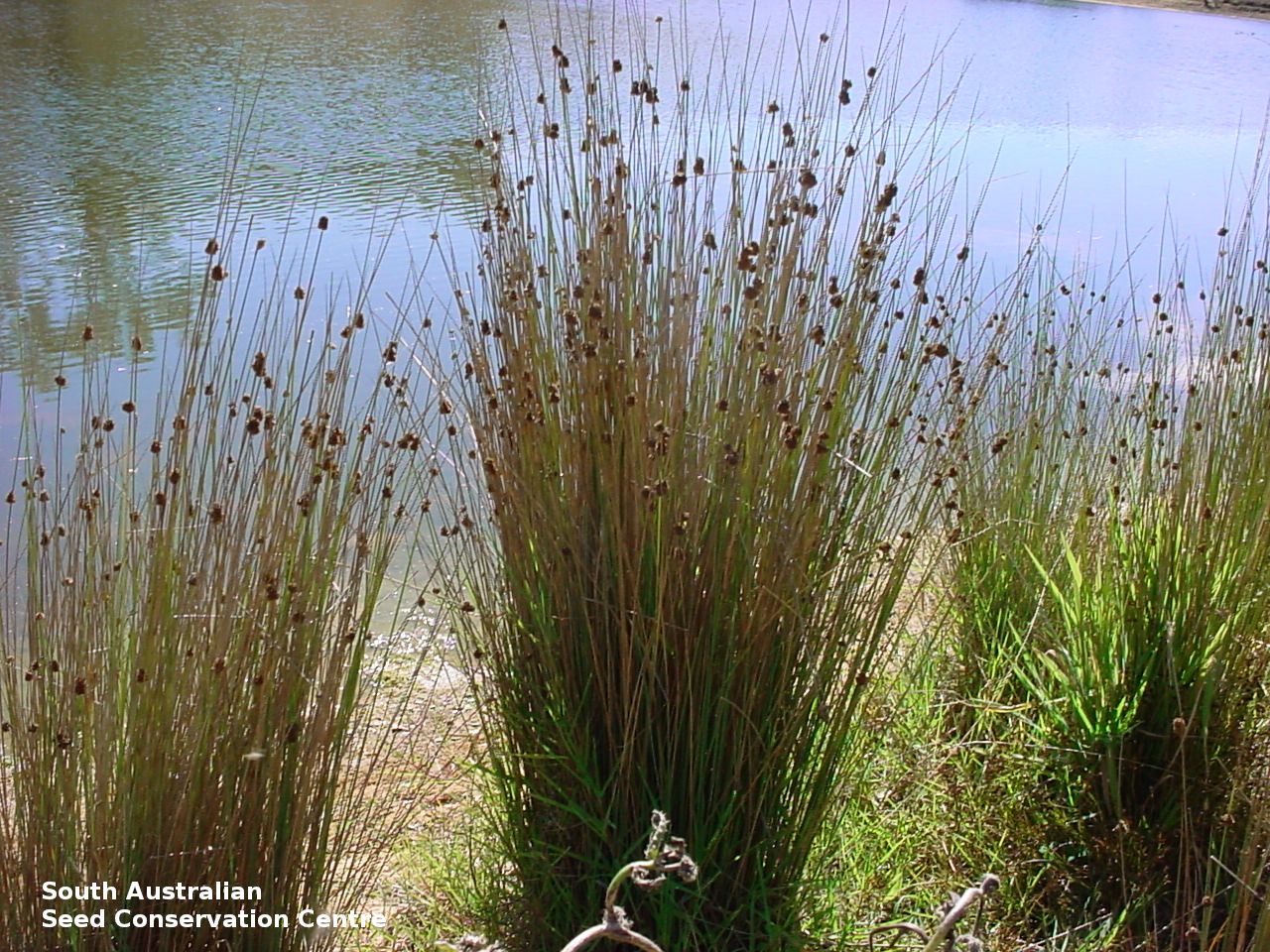
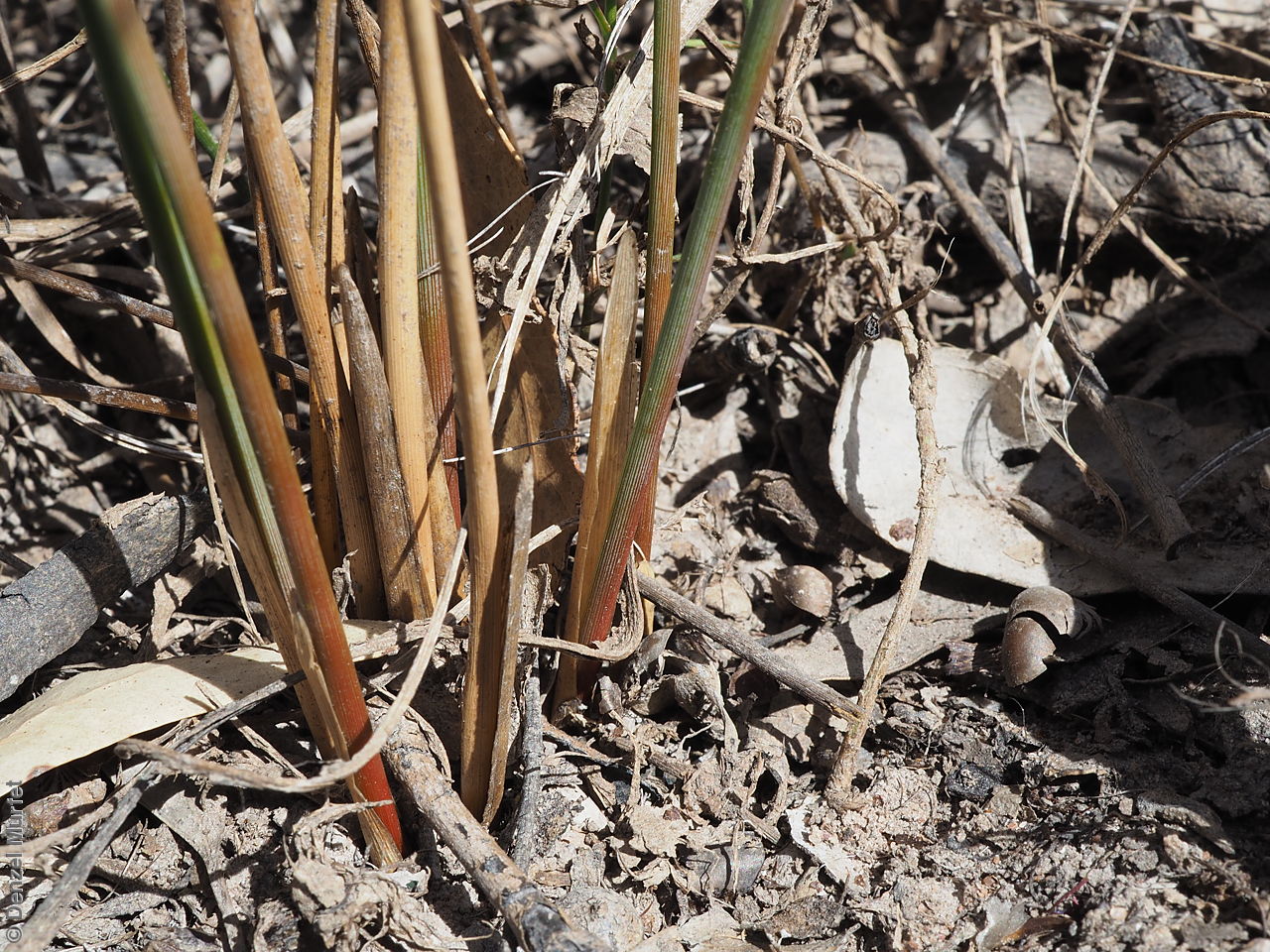
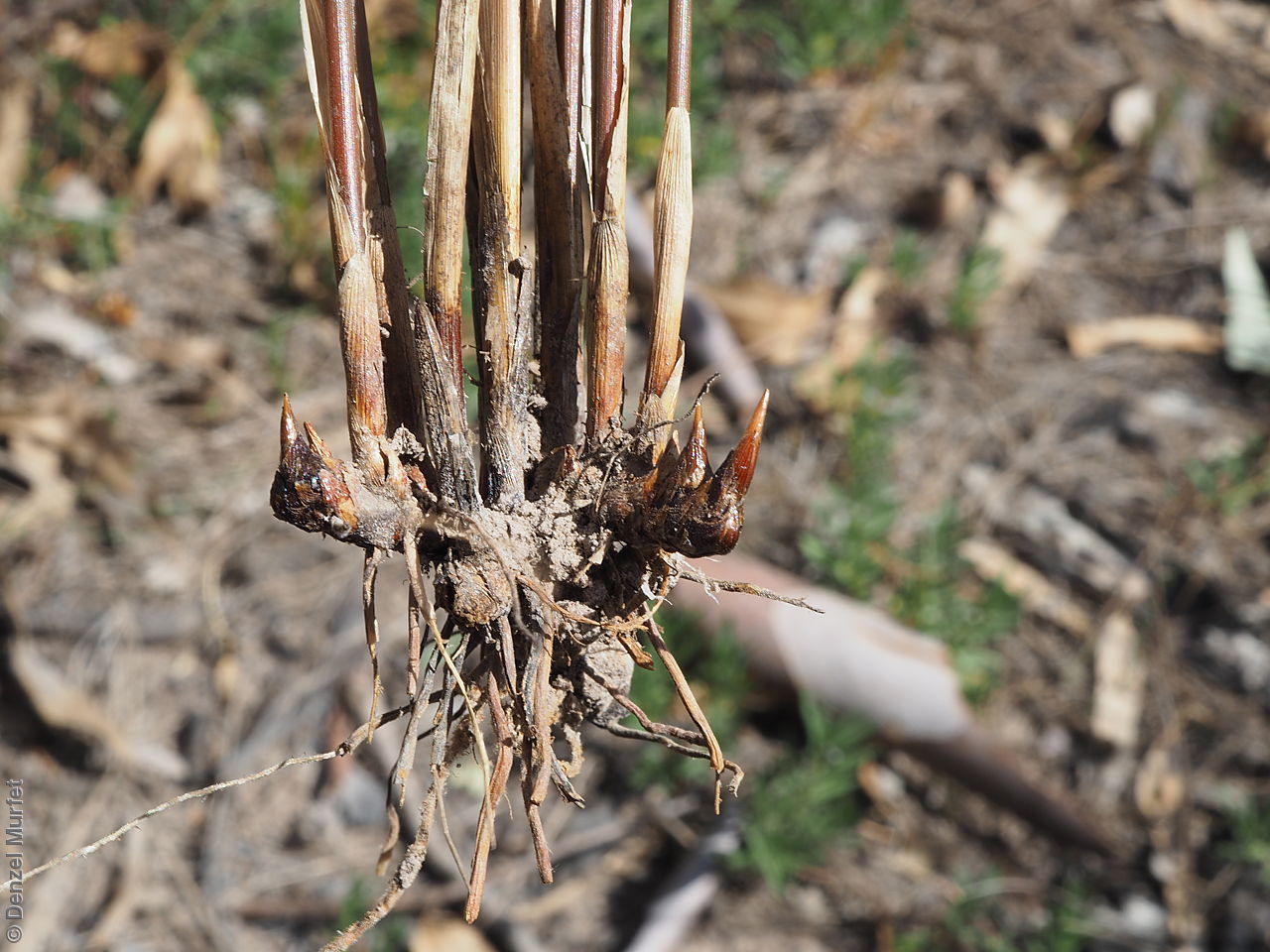
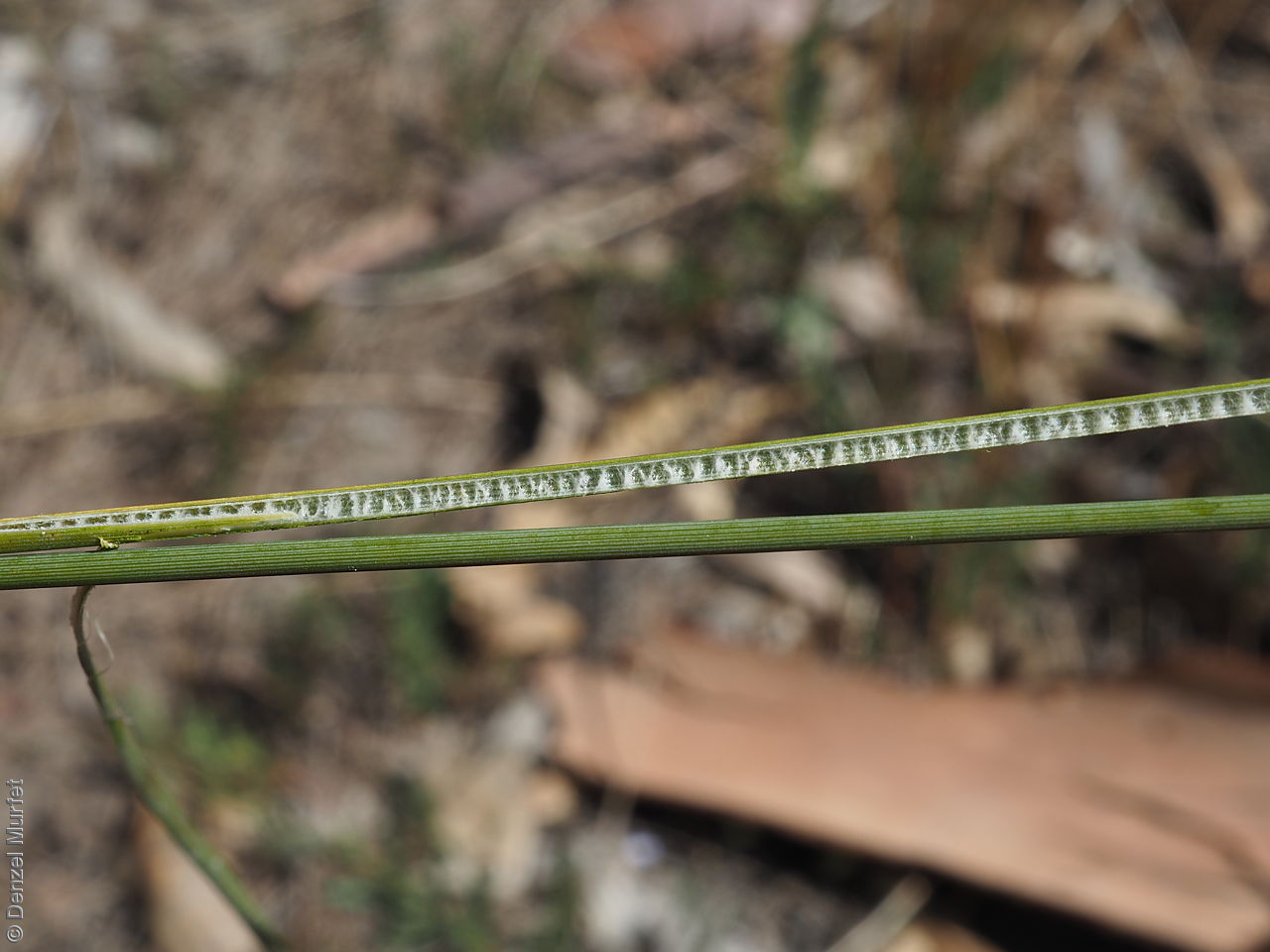
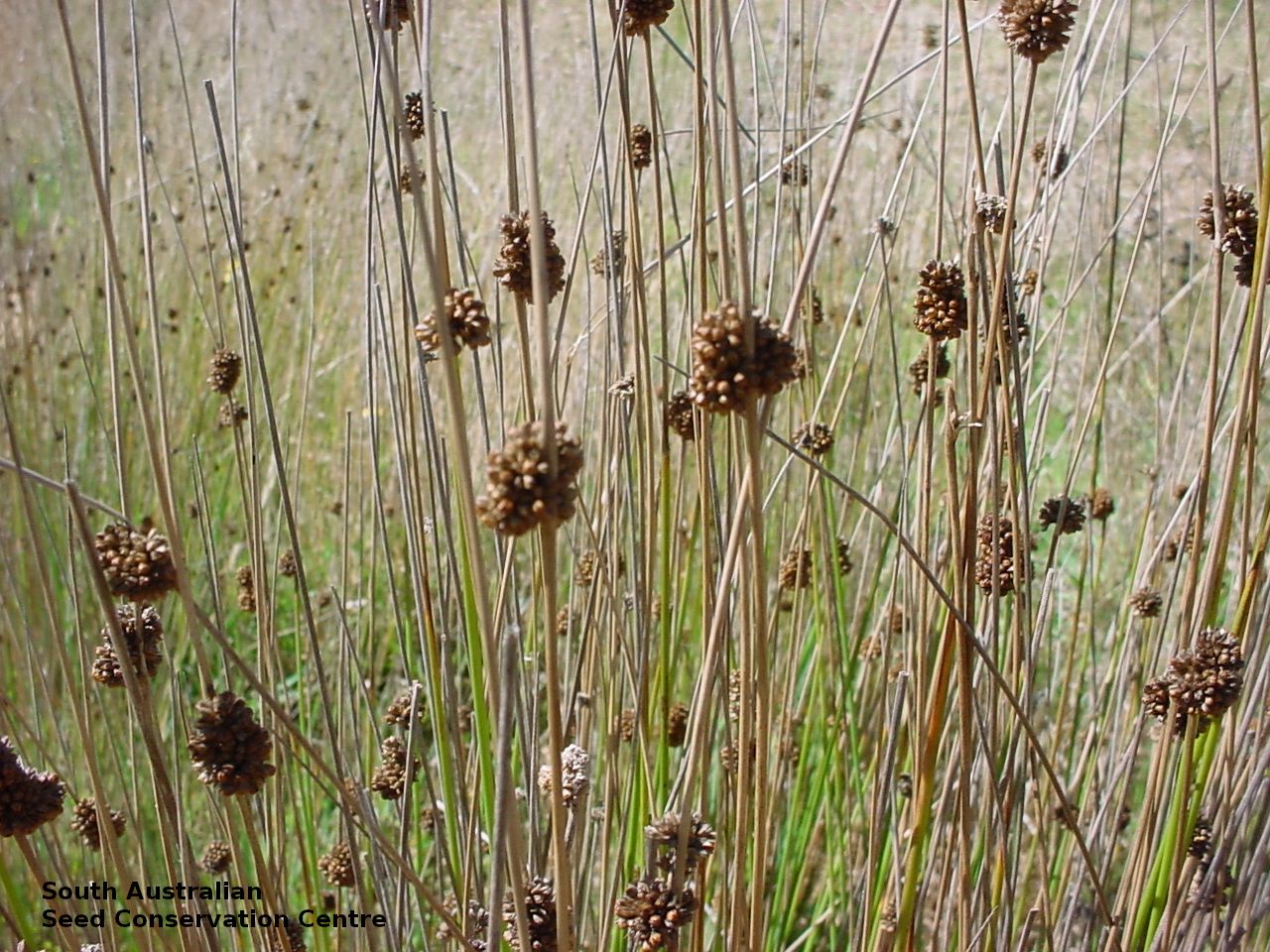
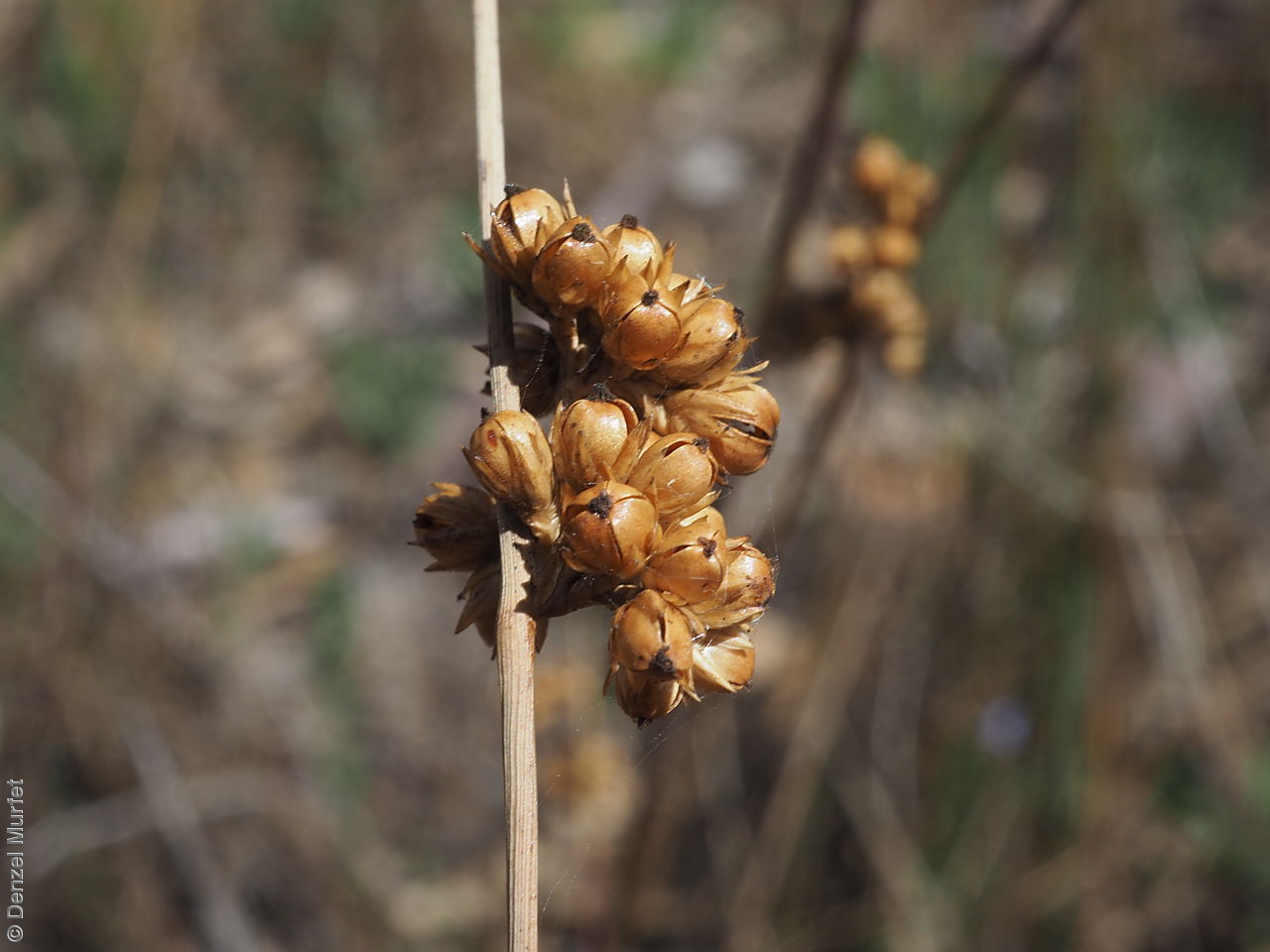
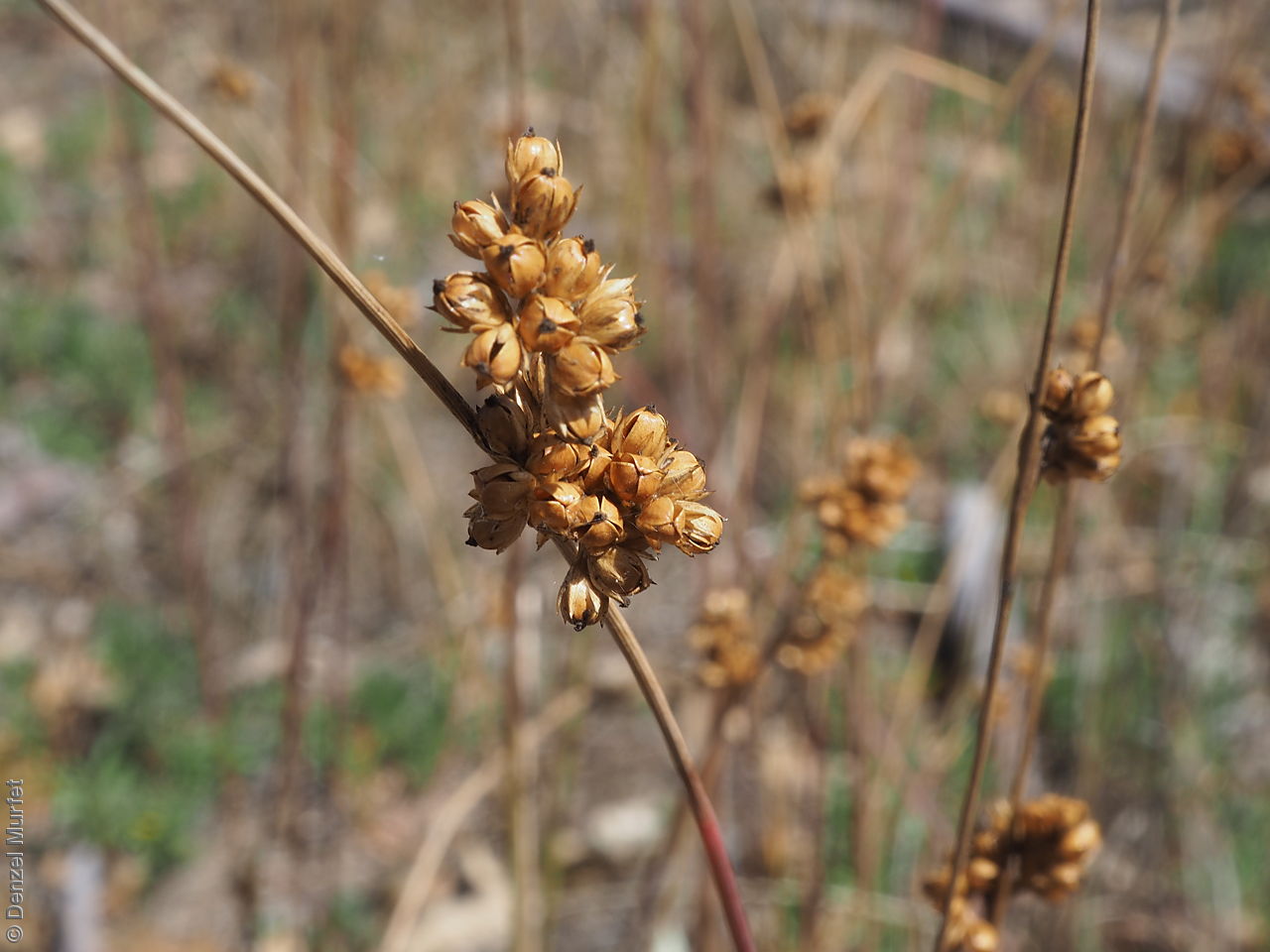
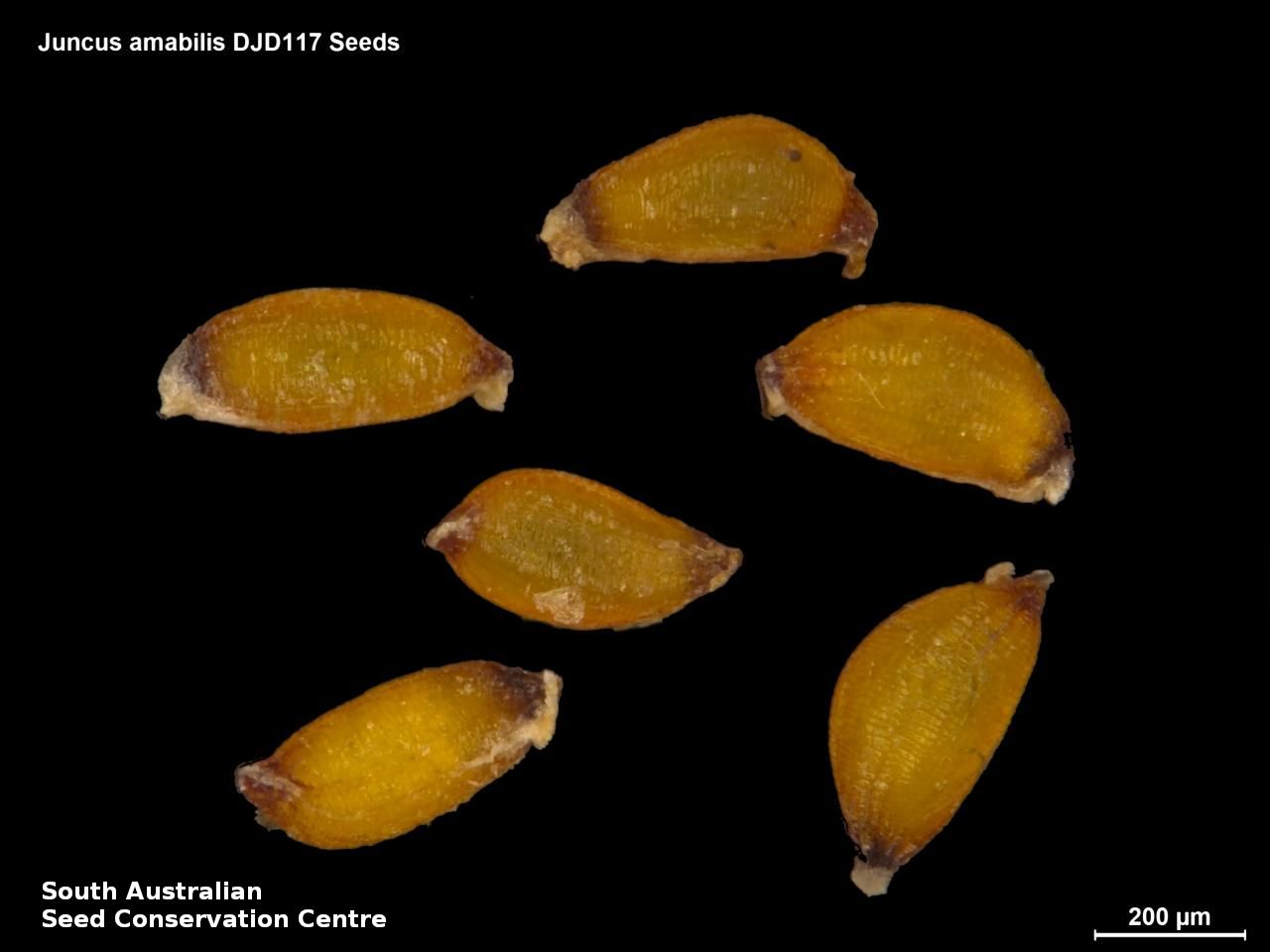
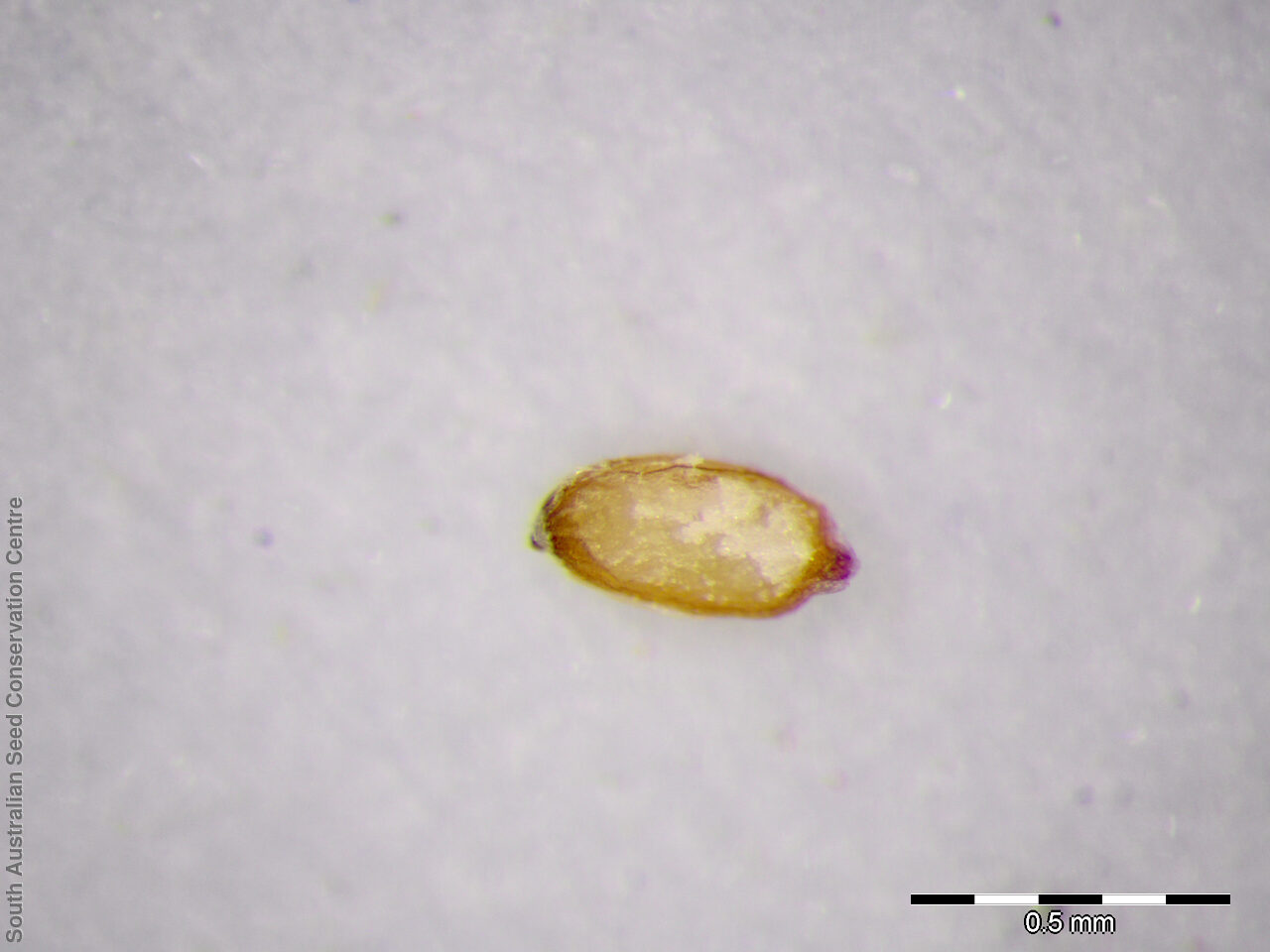


Botanical art
Etymology
Juncus from the Latin 'jungere' meaning to tie or bind; referring to the use of the rushes for weaving and basketry. Amabilis from Latin meaning beautiful, worthy of love, pleasing; unsure of how this is related to the species.
Distribution and status
Found in the southern Mount Lofty Ranges and the South-east in South Australia, growing damp sites. Also found in Western Australia, New South Wales, Victoria and Tasmania. Native. Rare in South Australia. Uncommon in Western Australia and Tasmania. Common in the other states.
Herbarium regions: Southern Lofty, South Eastern, Green Adelaide
NRM regions: Adelaide and Mount Lofty Ranges, South East
AVH map: SA distribution map (external link)
Plant description
Densely tufted perennial rush arising from a rhizome with greyish-green stems to 120 cm high and 2.3 mm diameter, easily compressed, pith interrupted pith with large air-spaces. Inflorescence in 1 to many sub-globular clusters with many pale brown flowers. Flowering between December and February. Fruits are clusters of golden brown ellipsoid capsules with numerous seeds. Seeds are tiny orange ovoid seed to 0.4 mm long and 0.2 mm wide, with fine reticulated surface. Seed embryo type is broad.
Seed collection and propagation
Collect seeds between February and April. Collect fruits either by picking off the mature heads, those turning brown and come-off easily or break-off the whole spikes. Place the heads in a tray and leave to dry for one to two weeks. Then rub the heads with a rubber bung to dislodge the seeds. Use a sieve to separate any unwanted material. Be careful, as the seeds are very small. Seeds are brown and hard. Store the seeds with a desiccant such as dried silica beads or dry rice, in an air tight container in a cool and dry place. From three collections, the seed viability were high, ranging from 90% to 100%.
| Location | No. of seeds (weight grams) | Number of plants | Date collected | Collection number Collection location | Date stored | % Viability | Storage temperature |
|---|---|---|---|---|---|---|---|
| BGA MSB | 325,000 (9.11 g) 325,000 (9.11 g) | 22-Feb-2005 | DJD117 Southern Lofty | 28-Mar-2006 | 95% | +5°C, -18°C | |
| BGA | 138,000 (1.21 g) | 30+ | 9-Feb-2009 | DJD1491 Southern Lofty | 20-Jul-2009 | 100% | -18°C |
| BGA | 390,000 (4.41 g) | 15+ | 14-Apr-2010 | KHB400 Southern Lofty | 1-Jan-2012 | 90% | +5°C, -18°C |
| BGA | 1,102,700 (11.910 g) | 4-Feb-2021 | K.H.Brewer Southern Lofty | 28-Jun-2021 | 95% | -18°C, -80°C |
Number of plants: This is the number of plants from which the seeds were collected.
Collection location: The Herbarium of South Australia's region name.
% Viability: Percentage of filled healthy seeds determined by a cut test or x-ray.